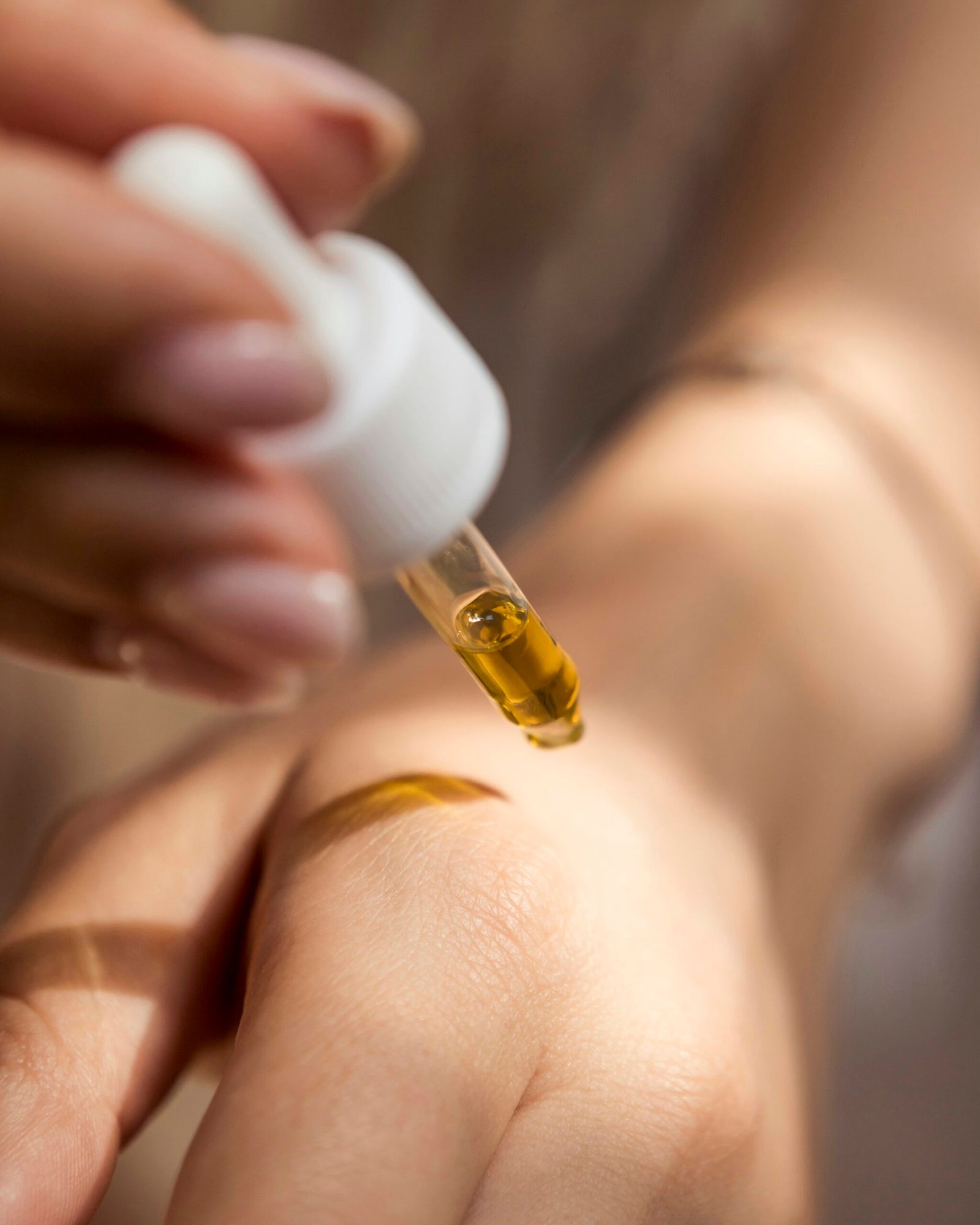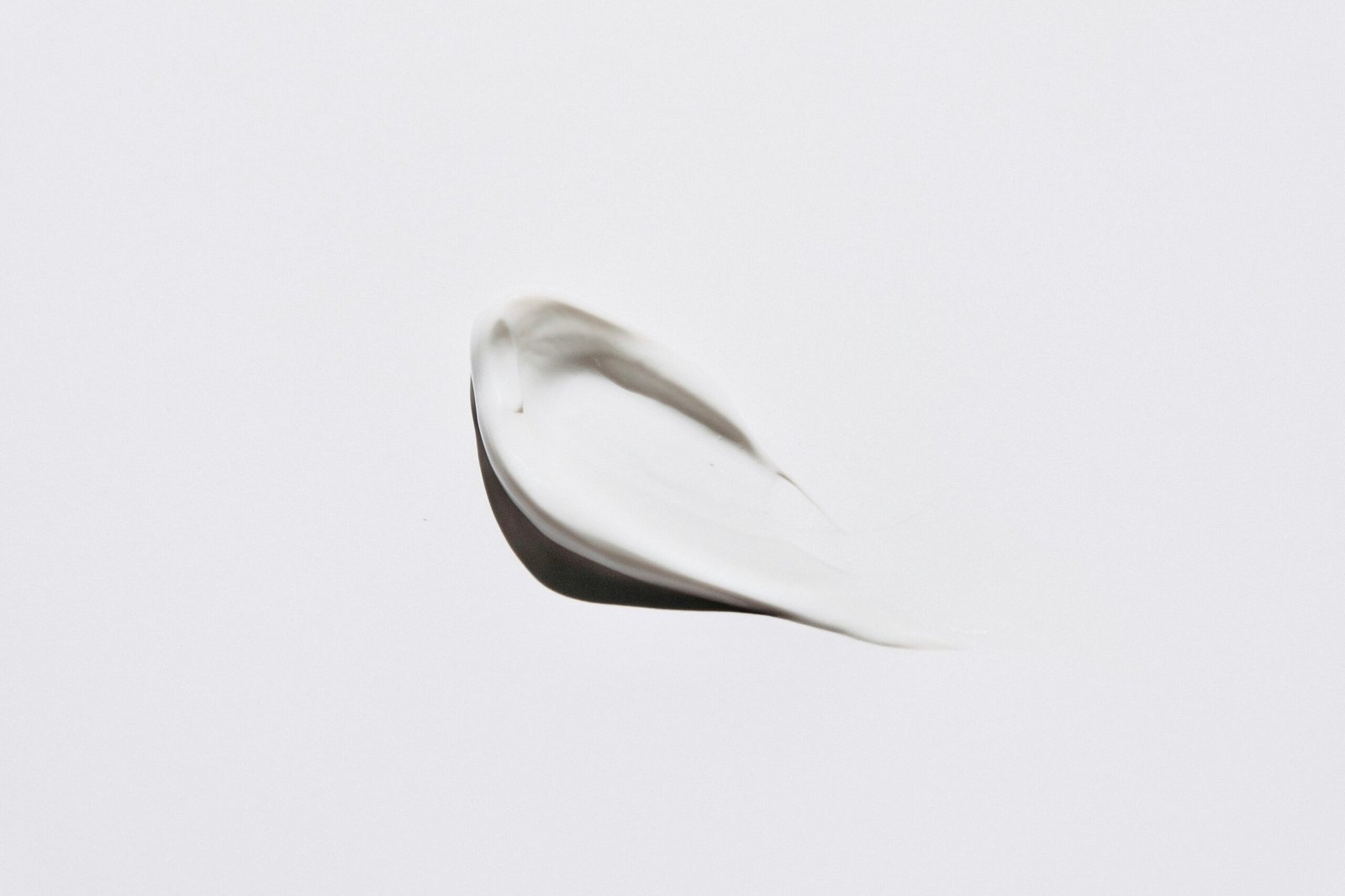Age spots, those pesky little marks that seem to appear out of nowhere as we get older, can be a source of frustration for many. Whether you’re concerned about them on your face, hands, or other parts of your body, finding effective ways to reduce their appearance is a common goal. Luckily, there are a variety of methods available that can help diminish the visibility of these spots and give you a more youthful and radiant complexion. From topical treatments to laser therapy, exploring the different options will enable you to find a solution that works best for you. So, if you’re wondering how you can reduce the appearance of age spots, read on to discover some helpful tips and tricks that will have you feeling confident and beautiful in your own skin once again.

Skincare Routine
Taking care of your skin is essential for maintaining a healthy and youthful appearance. One of the first steps in any skincare routine is to cleanse your skin thoroughly. Washing your face with a gentle cleanser removes dirt, oil, and impurities, leaving your skin fresh and clean. Be sure to choose a cleanser that is suitable for your skin type, whether it’s oily, dry, or sensitive.
After cleansing, it’s important to exfoliate regularly to remove dead skin cells and promote cell turnover. Exfoliation can be done using physical scrubs or chemical exfoliants, such as alpha hydroxy acids (AHAs) or beta hydroxy acids (BHAs). Remember to be gentle when exfoliating and avoid overdoing it, as this can cause irritation.
In addition to cleansing and exfoliating, using a brightening serum can help reduce the appearance of age spots. Look for serums that contain ingredients such as vitamin C or niacinamide, as these can help brighten the skin and fade dark spots over time. Applying the serum after cleansing and before moisturizing allows it to penetrate deeply into the skin for maximum effectiveness.
Lastly, don’t forget to apply sunscreen daily, even if it’s cloudy or you’re staying indoors. Sunscreen protects your skin from harmful UV rays, which can not only cause age spots to darken but also contribute to premature aging and skin damage. Choose a broad-spectrum sunscreen with a high SPF and apply it generously to all exposed areas of your skin. Reapply every two hours if you’re spending time outdoors or sweating.
Natural Remedies
If you prefer to take a more natural approach to reduce the appearance of age spots, there are several remedies you can try. One of the most popular natural remedies is using lemon juice. Lemon juice contains citric acid, which has natural skin-lightening properties. Simply apply fresh lemon juice directly to the age spots using a cotton ball and leave it on for about 15 minutes before rinsing off. Be cautious with lemon juice, as it can be drying and may cause irritation for those with sensitive skin.
Apple cider vinegar is another natural remedy that can help fade age spots. Mix equal parts of apple cider vinegar and water, and apply the solution to the affected areas using a cotton ball. Leave it on for a few minutes before rinsing off. Apple cider vinegar contains acetic acid, which helps exfoliate the skin and fade dark spots.
Aloe vera gel is known for its soothing properties and can also help lighten age spots. Apply a thin layer of pure aloe vera gel to the affected areas and leave it on for about 30 minutes before rinsing off. Aloe vera contains antioxidants and natural enzymes that can help improve skin tone and fade dark spots over time.
Another natural remedy to consider is applying buttermilk to the age spots. Buttermilk contains lactic acid, which helps exfoliate the skin and fade pigmentation. Simply soak a cotton ball in buttermilk and apply it to the affected areas. Leave it on for about 15 minutes before rinsing off.
Medical Treatments
If natural remedies don’t provide the desired results, it may be time to consult a dermatologist for professional advice and treatment options. Dermatologists can recommend a range of medical treatments to help reduce the appearance of age spots.
One commonly prescribed option is topical prescription creams that contain ingredients like hydroquinone, retinoids, or corticosteroids. These creams work by suppressing the production of melanin, the pigment responsible for dark spots. Regular use under the guidance of a dermatologist can help fade age spots and even out skin tone.
Chemical peels are another medical treatment option. During a chemical peel, a combination of chemicals is applied to the skin to exfoliate and remove the outermost layer. This process stimulates the growth of new, healthier skin cells, leading to a reduction in age spots. Chemical peels can vary in intensity, so it’s important to consult a dermatologist to determine the most suitable type of peel for your skin.
For more advanced cases, laser therapy may be recommended. Different types of lasers, such as intense pulsed light (IPL) or fractional lasers, can target and break up the pigment in age spots, allowing the body to naturally eliminate them. Laser treatments are typically performed by dermatologists or cosmetic surgeons and may require multiple sessions for optimal results.
Cryotherapy is another medical treatment option that involves freezing the age spots with liquid nitrogen. The extreme cold temperature destroys the excess pigment, allowing new, healthier skin to grow in its place. Dermatologists can assess your skin and determine if cryotherapy is a suitable option for you.
Makeup Techniques
Sometimes, achieving a flawless complexion is as simple as using the right makeup techniques. Color correctors can be a game-changer when it comes to minimizing the appearance of age spots. Green color correctors can counteract redness, while peach or orange correctors can neutralize dark spots. Apply a small amount of color corrector to the areas you want to address before applying foundation or concealer for a more even skin tone.
Foundation or concealer can help cover age spots and even out your complexion. Opt for formulas that provide good coverage, but still look natural. Choose shades that match your skin tone and blend well. Use a makeup sponge or brush to apply and blend the product into your skin for a seamless finish.
Setting your makeup with powder can help it last longer and prevent transferring or smudging. Use a powder brush or sponge to lightly dust a translucent or color-matching powder over your face, focusing on the areas where you applied foundation or concealer. This step helps to set the product in place and gives your skin a smooth, matte appearance.

Diet and Lifestyle
Taking care of your skin goes beyond topical treatments. Your diet and lifestyle choices also play a significant role in maintaining healthy, youthful-looking skin. Here are some tips to incorporate into your daily routine:
–Eating a balanced diet rich in fruits, vegetables, whole grains, and lean proteins can provide your skin with the nutrients it needs to stay healthy. Foods high in antioxidants, such as berries and leafy greens, can help protect your skin from free radicals and promote a youthful appearance.
–Staying hydrated is crucial for maintaining healthy skin. Drink plenty of water throughout the day to keep your skin hydrated and plump. This helps reduce the appearance of age spots and keeps your skin looking supple and radiant.
-Managing stress levels is important, as prolonged stress can take a toll on your skin. Find healthy ways to cope with stress, such as practicing yoga, meditation, or engaging in hobbies that relax you. Find what works best for you and make it a priority to take care of your mental well-being.
-Getting enough sleep is essential for skin rejuvenation. Lack of sleep can contribute to the development of age spots and accelerate the aging process. Aim for 7-9 hours of quality sleep each night to allow your body to repair and regenerate.
-If you’re a smoker, quitting is one of the best things you can do for your skin’s health. Smoking damages collagen and elastin fibers, leading to premature aging, wrinkles, and age spots. Seek support and resources to help you quit smoking and improve not only your skin but also your overall health.
-Limiting alcohol intake is also crucial for maintaining healthy skin. Alcohol dehydrates the body and can exacerbate skin conditions such as dryness or inflammation. Try to limit your alcohol consumption and opt for healthier alternatives, such as infused water or herbal teas.
Home Remedies
In addition to professional treatments and lifestyle changes, there are several home remedies you can incorporate into your skincare routine to help reduce the appearance of age spots. Here are some effective options:
-Apply sunscreen regularly: UV rays can worsen the appearance of age spots. Using a broad-spectrum sunscreen with a high SPF can help protect your skin and prevent further darkening. Apply sunscreen daily, even on cloudy days or when staying indoors.
-Use creams containing retinol: Retinol, a form of vitamin A, is known for its skin-rejuvenating properties. Look for creams or serums that contain retinol and apply them as directed. Retinol helps improve skin pigmentation, including reducing the appearance of age spots.
-Try vitamin C serums: Vitamin C is a potent antioxidant that can help fade age spots and even out skin tone. Look for serums or creams that contain stable forms of vitamin C and apply them daily. Vitamin C also boosts collagen production, promoting a more youthful complexion.
-Use hydroquinone-based creams: Hydroquinone is a skin-lightening agent that can fade dark spots. It is available in over-the-counter creams or can be prescribed by a dermatologist for higher concentrations. Follow the instructions provided and consult a professional if you have any concerns.
-Apply kojic acid products: Kojic acid is another skin-lightening ingredient derived from fungi. It inhibits the production of melanin and can help lighten age spots. Look for creams or serums containing kojic acid and use them consistently for best results.
-Use azelaic acid creams: Azelaic acid is a naturally occurring acid that has skin-brightening properties. It helps fade age spots and reduces inflammation. Look for creams or gels containing azelaic acid and apply them as directed.
Remember to be patient when using home remedies, as results may take time to become noticeable. If you experience any adverse reactions, discontinue use and consult a dermatologist.
Microdermabrasion
Microdermabrasion is a non-invasive cosmetic procedure that can help reduce the appearance of age spots. Before proceeding with microdermabrasion, it’s essential to consult a skincare professional who can assess your skin and determine if this treatment is suitable for you.
During the treatment process, a handheld device with a diamond or crystal tip is used to exfoliate the outermost layer of the skin. This gentle abrasion removes dead skin cells, promoting cell turnover and revealing fresher, brighter skin underneath. The procedure itself is generally painless, with most people describing a mild scratching or vibrating sensation.
After the microdermabrasion treatment, it’s important to follow post-treatment care instructions provided by your skincare professional. This may include moisturizing your skin regularly, avoiding sun exposure, and using gentle, non-irritating skincare products. It’s normal to experience some redness or sensitivity immediately after the procedure, but this should subside within a few hours or days.
Expected results from microdermabrasion vary depending on the individual and the severity of the age spots. Multiple sessions are typically recommended for optimal results, spaced several weeks apart. Microdermabrasion can help improve skin texture, reduce the appearance of age spots, and create a more youthful glow.
Chemical Peels
Chemical peels are another effective treatment option for reducing the appearance of age spots. Just like with microdermabrasion, it’s crucial to consult a dermatologist before undergoing a chemical peel to determine the best type of peel for your skin.
There are different types of chemical peels available, including superficial, medium, and deep peels. Superficial peels use milder acids, such as alpha hydroxy acids (AHAs), to exfoliate the outermost layer of the skin. Medium and deep peels penetrate deeper into the skin and target more stubborn age spots. Your dermatologist will recommend the most appropriate type of chemical peel based on your skin condition and desired results.
During the procedure, a chemical solution is applied to the skin, causing the outer layers to peel off. The new skin that grows in its place is usually smoother, with a more even complexion. The process may cause some discomfort or a warming sensation, but it is generally well-tolerated.
After the chemical peel, it’s essential to follow the aftercare instructions provided by your dermatologist. This typically involves keeping the skin moisturized, avoiding sun exposure, and using gentle skincare products. It’s common to experience redness, flaking, and mild discomfort after a chemical peel, but these side effects should subside within a few days or weeks.
Possible side effects of chemical peels may include temporary skin discoloration, scarring, infection, or increased sensitivity to the sun. It’s important to discuss any concerns or potential risks with your dermatologist before undergoing the procedure.

Laser Treatments
Laser treatments have become increasingly popular for targeting age spots and other skin concerns. Consult a dermatologist or cosmetic surgeon experienced in laser therapy to evaluate your skin condition and determine the most suitable type of laser treatment for you.
Different types of lasers can be used to treat age spots, including intense pulsed light (IPL) lasers and fractional lasers. IPL lasers emit a broad spectrum of light that targets the excess pigment in age spots, while fractional lasers create tiny microscopic injuries in the skin, stimulating collagen production and promoting skin rejuvenation.
During the laser treatment process, the laser device emits controlled beams of light or energy onto the targeted areas of the skin. This process breaks down the excess pigment or activates the body’s natural healing response, depending on the type of laser used. The procedure may cause a warming or snapping sensation, but most people tolerate it well.
Recovery from laser treatments varies depending on the individual and the type of laser used. Your dermatologist or cosmetic surgeon will provide instructions for post-treatment care, which may include avoiding sun exposure, keeping the skin moisturized, and using gentle skincare products. Some redness, swelling, or mild discomfort may occur after the procedure, but these side effects typically subside within a few days or weeks.
Potential side effects of laser treatments may include temporary skin discoloration, redness, blistering, or scarring. It’s crucial to follow all pre and post-treatment instructions provided by the medical professional to minimize these risks. Results from laser treatments can vary, but most individuals experience a reduction in the appearance of age spots and an overall improvement in skin tone and texture.
Cryotherapy
Cryotherapy is a medical treatment that uses freezing temperatures to target and destroy age spots. Before considering cryotherapy, it’s important to consult a dermatologist who can evaluate your skin and determine if this treatment is appropriate for you.
During cryotherapy, liquid nitrogen is applied to the age spots, causing them to freeze and eventually slough off as the skin heals. The extreme cold temperature destroys the excess pigment, allowing new skin to grow in its place. The procedure is relatively quick, with each age spot typically treated for a few seconds.
After cryotherapy, the treated areas may appear swollen, red, or blistered. These side effects are temporary and should heal within a few weeks. It’s crucial to follow the aftercare instructions provided by your dermatologist, which may include keeping the area clean, avoiding sun exposure, and applying a healing ointment if necessary.
Potential risks and side effects of cryotherapy include scarring, changes in skin color or texture, or infection. It’s important to discuss any concerns or medical conditions with your dermatologist before proceeding with cryotherapy. Several sessions may be needed to achieve the desired results, depending on the severity and number of age spots.
Cryotherapy can be an effective option for reducing the appearance of age spots, but it’s essential to have realistic expectations and understand that results may vary from person to person. Your dermatologist can provide guidance on the most suitable treatment plan based on your skin condition and desired outcome.
In conclusion, reducing the appearance of age spots requires a comprehensive approach that includes a skincare routine, natural remedies, medical treatments, makeup techniques, and lifestyle changes. By following these strategies consistently and consulting with skincare professionals when necessary, you can achieve a more youthful and even complexion. Remember, the key is patience and consistency, as it may take time to see noticeable results.

Losing weight and keeping it off can be a challenge. I’m here to show you good-tasting foods and drinks that help you lose weight, and are enjoyable to eat.





